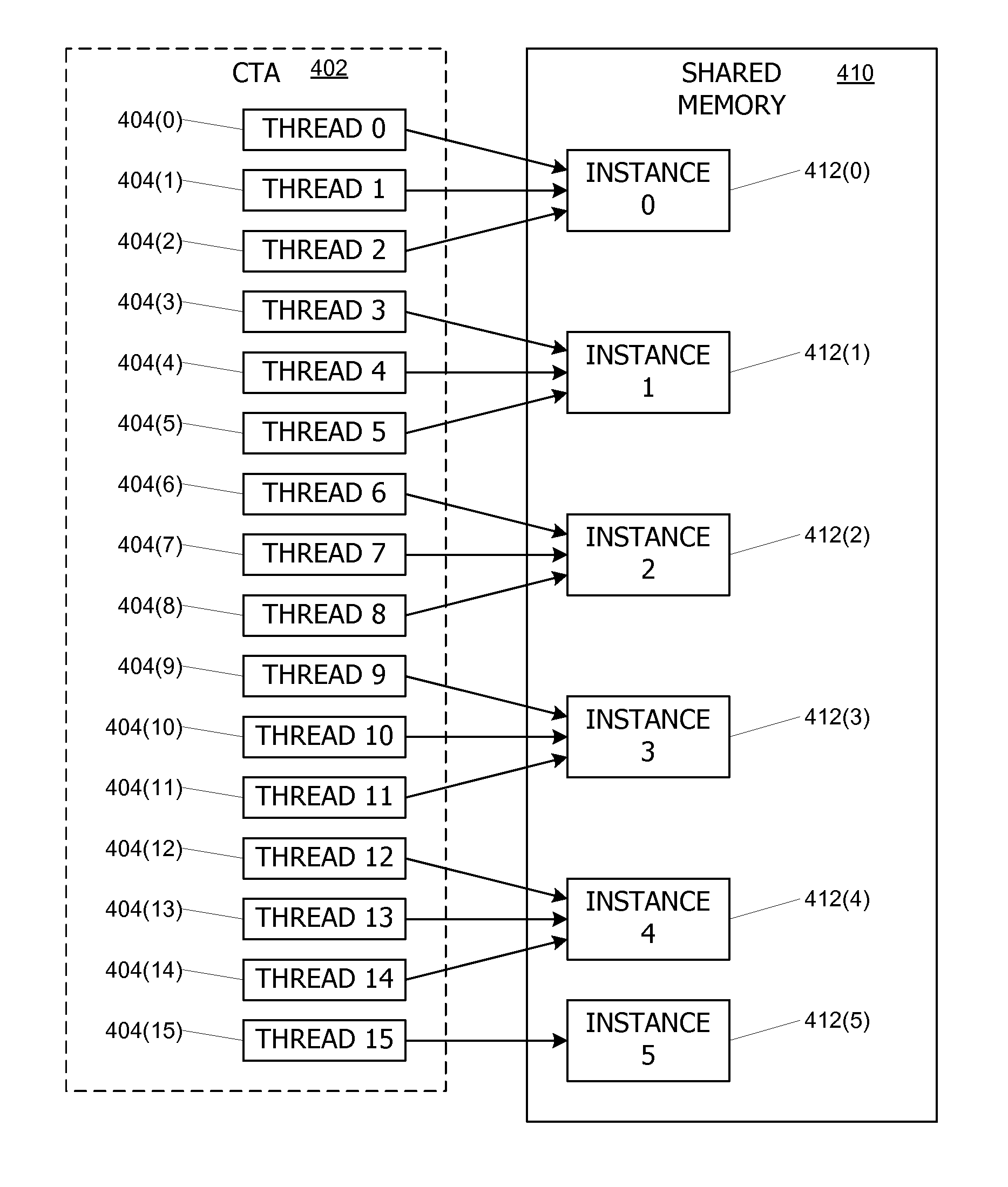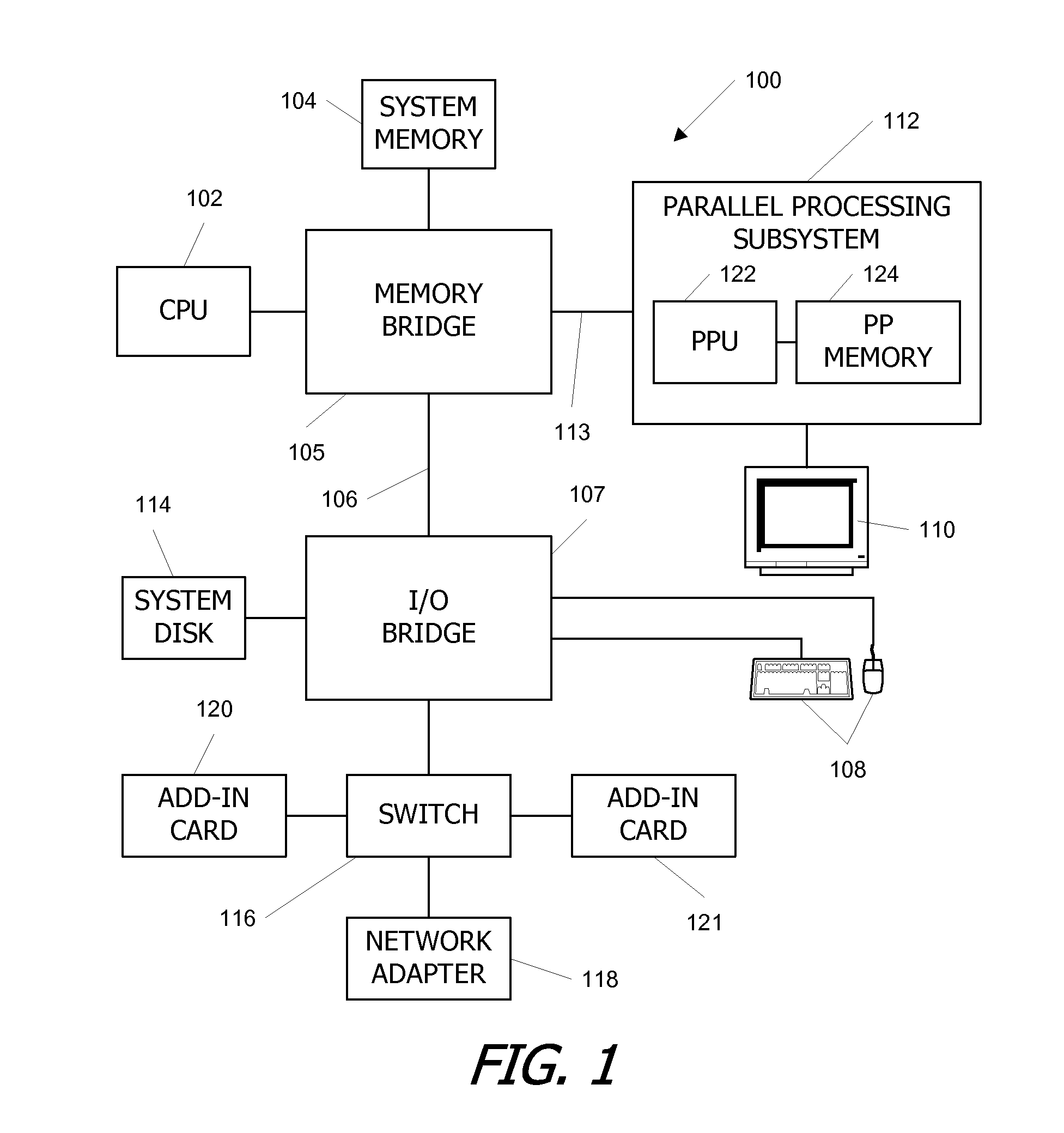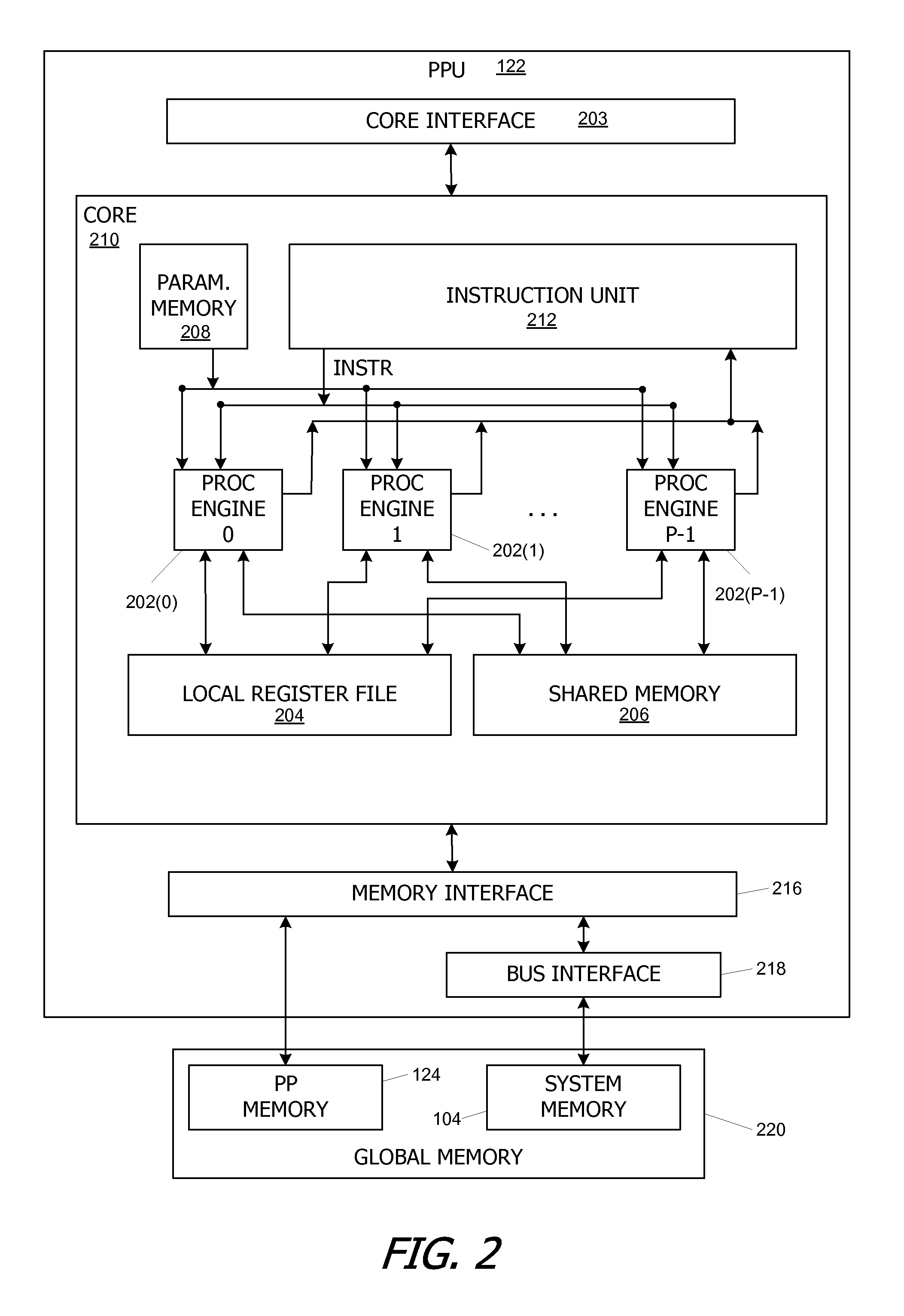Controlling access to memory resources shared among parallel synchronizable threads
a technology of memory resources and shared memory resources, applied in the field of parallel data processing, can solve the problems of inability to exploit parallel processing in certain algorithms, inability to reach the target, and inability to use the target,
- Summary
- Abstract
- Description
- Claims
- Application Information
AI Technical Summary
Benefits of technology
Problems solved by technology
Method used
Image
Examples
Embodiment Construction
[0023]Embodiments of the present invention use thread synchronization techniques to manage access to a memory resource (e.g., a counter) that is shared among multiple threads. Each thread has a unique identifier (tid), and threads are assigned to instances of the shared resource so that up to k threads share each instance. Each thread assigned to a particular instance of the shared resource has a unique ordering index (which may be defined, e.g., as tid % k). A thread is allowed to access its assigned instance of the resource at a point in the program code determined by its ordering index, and the threads are advantageously synchronized (explicitly or implicitly) so that no more than one thread attempts to access the same instance of the resource at a given time. One consequence of this approach is that the order in which different threads access the same instance of a shared resource is well defined.
System Overview
[0024]FIG. 1 is a block diagram of a computer system 100 according t...
PUM
 Login to View More
Login to View More Abstract
Description
Claims
Application Information
 Login to View More
Login to View More - R&D
- Intellectual Property
- Life Sciences
- Materials
- Tech Scout
- Unparalleled Data Quality
- Higher Quality Content
- 60% Fewer Hallucinations
Browse by: Latest US Patents, China's latest patents, Technical Efficacy Thesaurus, Application Domain, Technology Topic, Popular Technical Reports.
© 2025 PatSnap. All rights reserved.Legal|Privacy policy|Modern Slavery Act Transparency Statement|Sitemap|About US| Contact US: help@patsnap.com



